BIRD-TOPIA
UNVEILING THE NEW URBAN FABRIC FOR NEGLECTED CITIZENS

YIRONG ZHANG
PRATT INSTITUTE
BFA INTERIOR DESIGN 2024
PROFESSOR: BRENDAN MORAN


YIRONG ZHANG
PRATT INSTITUTE
BFA INTERIOR DESIGN 2024
PROFESSOR: BRENDAN MORAN
UNVEILING THE NEW URBAN FABRIC FOR NEGLECTED CITIZENS

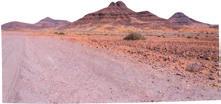










YIRONG ZHANG
PRATT INSTITUTE
BFA INTERIOR DESIGN 2024
PROFESSOR: BRENDAN MORAN












Do we need a bird-topia?
Thesis Question: Zoo?
No, Zootopia.
Performance of Site
All you need to know about pigeons but we are afraid to ask...
Floating Points
Green La La Land
Aqua Spa
Aviary Hotel 5o Bowery
Building Code Regulations
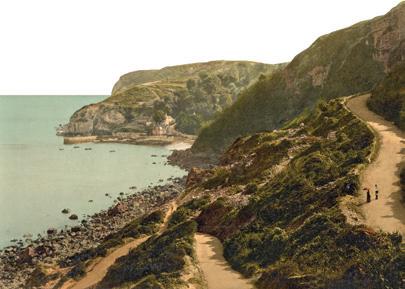



Did urban-adapted wildlife establish their citizenship in the natural ecosystem, given their coexistence with humans in the same universe as fellow creatures?





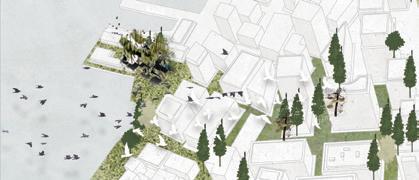
My aim is to empower birds to thrive amidst the hustle and bustle of New York City. This means not only fulfilling their daily requirements and offering engaging amenities but also creating safe living spaces and reducing psychological stress. As a result, birds can find a more fitting home and adapt to their environment more comfortably. These bird habitats, spanning from individual units to interconnected areas, will become integral components of the urban landscape’s new interior.

[Highway cuts through natural habitats leading habitat fragmentation.]
Purpose:
Host
Question: What’s the hierarchy between animals and human?
(Sympathy & Companionship) (How?) (Creating Environments) (Position & Circulation)
Allow Birds’ desire and habites.


Human dominate and observe, with all paths made for their movement.
[Surroundings are every elements around them, while environment are element animals desired.] Animals are confined
Exploring the Impacts of Human Advancements on Coexistence
As urban-adapted wildlife navigate increasingly streamlined human lifestyles, the question arises: Will they autonomously adjust their behaviors in response to human advancements? This inquiry prompts an examination of the ultimate destinations shaped by human behavior. The dynamic landscape of societal evolution gradually shifts the equilibrium for animals, potentially leading to habitat loss and imbalance.



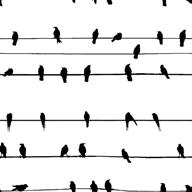

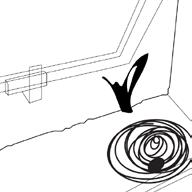

Cities have lots of new rules that animals must figure out because they have not adapted to

To explore the ethical dimensions of animal behavior within zoos and proposes a paradigm shift towards integrating urban planning strategies to provide safe and designated habitats for wildlife. Furthermore, the controlled settings of zoos can never authentically recreate the intricate ecosystems present in the natural habitats of animals. This constraint limits their capacity to display natural behaviors and adjust to their environment.


my aim is to provide animals with safe and designated habitats in their natural environment through urban planning, allowing them to roam freely in their occupied spaces.
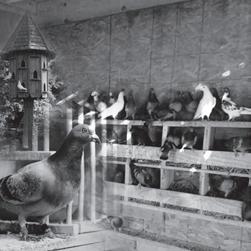
When pigeons are confined to coops, they rely on humans for sustenance, forfeiting their natural instincts for survival in the wild. Human owning coops reinforces human dominance over pigeons, ignoring their self-consciousness.
[Zoos, which congregate animals together, are in fact isolating them.]
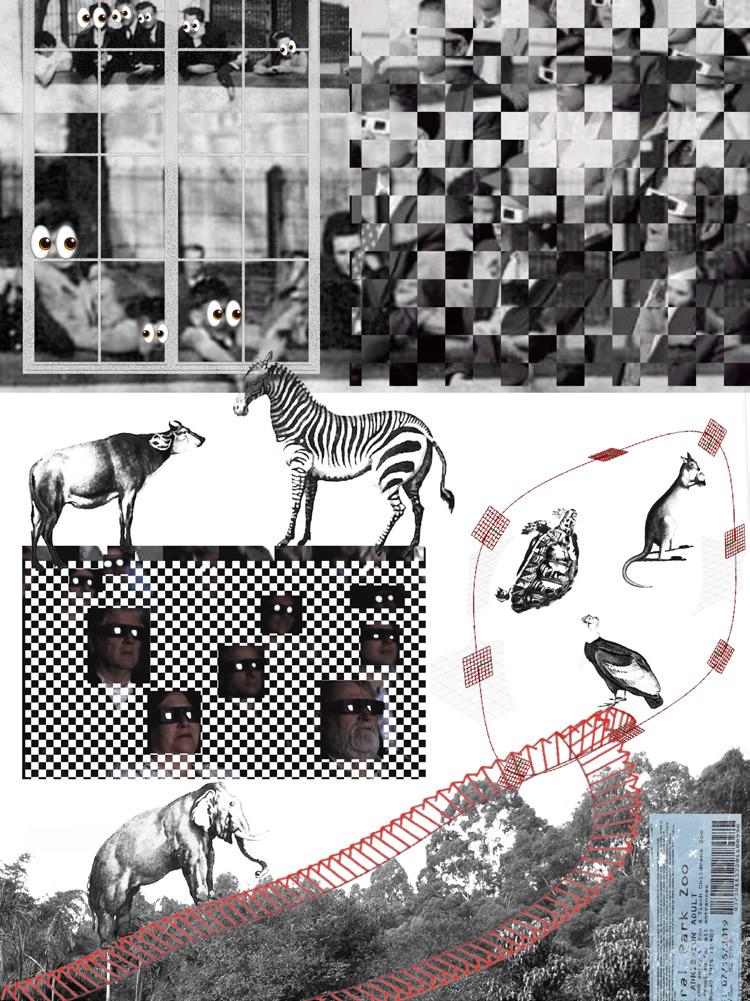
Envisioning a limitless, liberating, unconstrained, and vibrant living environment.
As the city continually evolves, the natural habitats that once defined it are gradually replaced, fading from the collective memory of its inhabitants. This rapid development can leave urban dwellers struggling to adapt .
Should a species integral to the city’s ecosystem fall behind, urban evolution may grind to a halt.

Observing feral pigeons amidst New York City’s bustling streets unveils the interconnectedness of humans, interior design, urban landscapes, and cultural norms, in turn revealing the unmanifested stagnation of urban ecosystems. How might one type of bird—as a representative of the animal realm—suggest an affirmative future for equal citizenship?

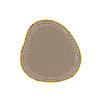



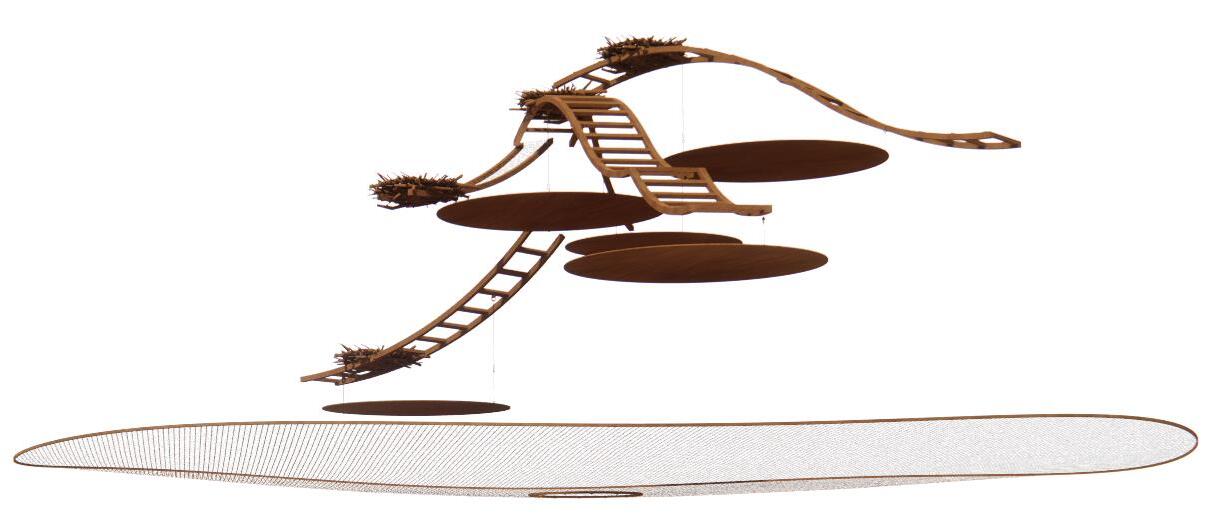





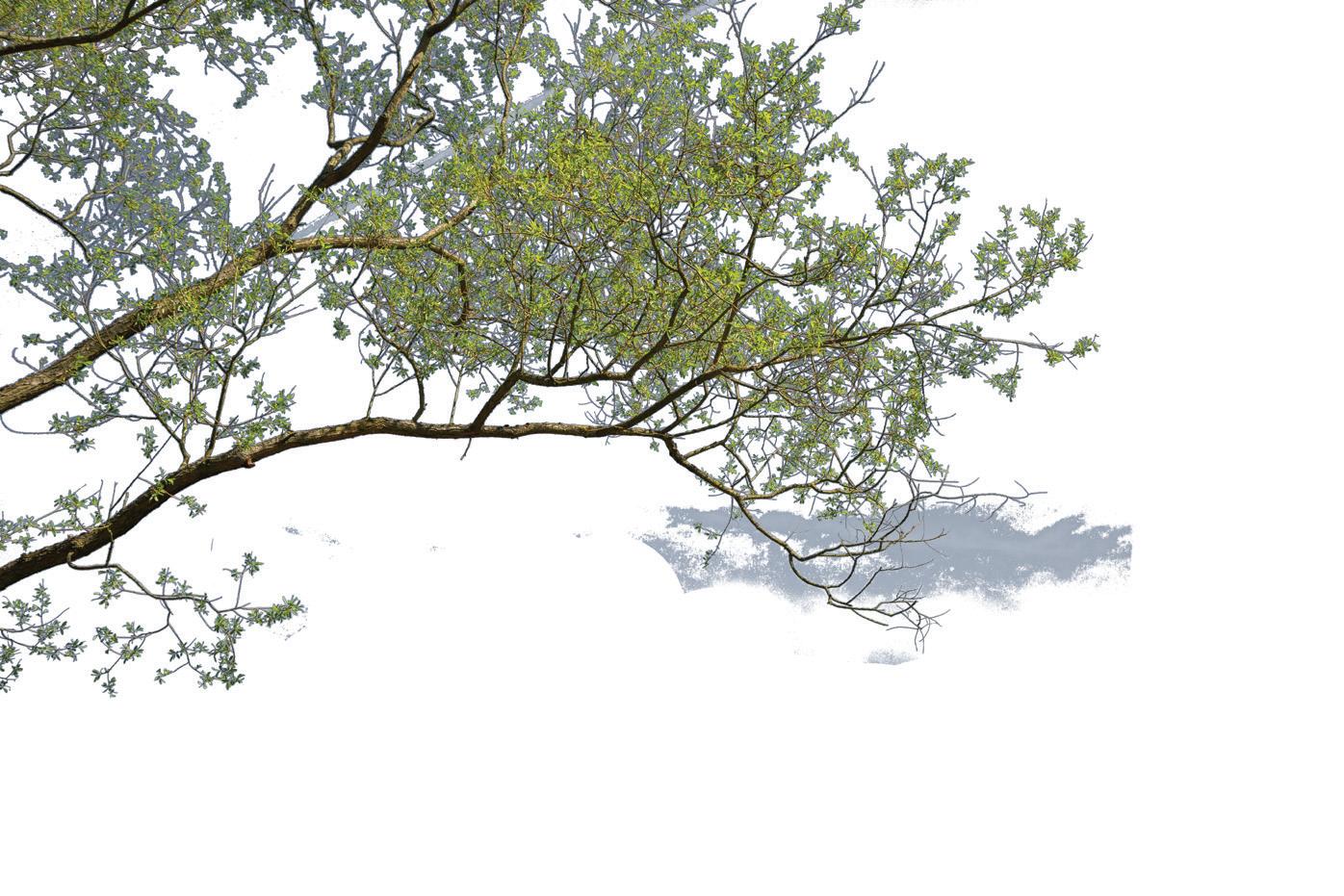
















New York's Chinatown features diverse buildings, including old commercial structures from the late 19th and early 20th centuries, characterized by traditional masonry, wrought-iron details, and multiple stories housing shops, restaurants, and supermarkets. Additionally, there are vintage apartment buildings, sometimes modernized, providing residential spaces. Mixed-use buildings combine commercial and residential areas, reflecting the area's intertwined functions. Furthermore, Chinatown hosts community centers, places of worship, and schools for various events and ceremonies, showcasing its rich cultural and social heritage. Overall, these buildings hold historical and cultural significance, reflecting Chinatown's vibrant life.

I seek to evaluate the implementation of a new planning system in a historically rich location, where the collision of tradition and innovation is evident, aiming to rejuvenate the old cityscape with a fresh appearance.
Choosing a site involves considering various factors:
1. Preferable to be located where there is presently little to no vegetation.
2. Must be positioned at a specific distance from areas of heavy foot and vehicle traffic flow (Removed from pedestrian walkways, bridges, and parking lots).
3. Souldn’t overlap with existing bird habitats.
The program at each site will vary, tailored to the unique circumstances of that location, encompassing factors like population, green space availability, and overall prosperity. By addressing the specific needs of pigeons to enhance their daily routines, each site boasts its own advantages. As this approach proliferates across numerous locations, a veritable avian utopia will begin to take shape within the cityscape.


Species: Rock Dove, Columba Liva, Domestic Pigeon
Size: Adult 11 - 15” long with a 24 - 28’’ wingspan
Weight: 8.4 - 13.4 oz
Appearance: A dark bluish-grey body, glossy feathers on its neck and wings, colorful eyes, bluish-grey skin around the eyes, a grey-black bill with an off-white spot, and purplish-red feet.
Food and Water: Primarily feed on seeds, grains, and scraps in urban environments. Require clean water for drinking and bathing to maintain plumage and hygiene.
Shelter: In nooks, ledges, and crevices of buildings, bridges, and other structures.
Social Interaction: Often seen in flocks. Communicate through vocalizations and body language, engaging in preening and courtship displays.



DOMESTIC PIGEONS FACE VARIOUS THREATS IN URBAN SETTINGS, INCLUDING PREDATORS, POLLUTION, AND HUMAN INTERFERENCE. PROVIDING SAFE SPACES FREE FROM HAZARDS IS ESSENTIAL FOR THEIR WELL-BEING.


Notice: - Watch pigeon interactions for social clues and individual traits. - Avoid disturbing nesting areas, especially during breeding. - Offer healthy foods in moderation, avoiding bread. - Look for signs of illness or injury and seek help if needed.

(a) Coexistence:


A peaceful and mutually advantageous coexistence between humans and birds in a shared habitat implies that both species can inhabit the same space harmoniously, acknowledging and accommodating each other’s presence and requirements.
(c) Mobility: Birds are highly mobile and adaptable, moving through urban landscapes and using green spaces, parks, and even rooftops.
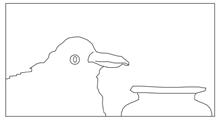
(b) Generalist Diets: Birds often have a flexible diet, allowing them to consume a wide variety of food sources, including human-provided food.
(d) Opportunistic Behavior:
Birds taking advantage of available food and shelter resources in the urban environment.

Location: Columbus Park Playground, Mulberry St & Baxter St, New York, NY 10013
Program: Nesting, bathing, singing, socializing, foraging, roosting. Area: 13658 sqft
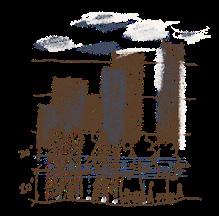

City containes multiple layers, with the ground surface primarily for human activities and the mid-to-upper levels for flying animals. However, conflicts often arise in public spaces when humans and animals occupy the same level. Therefore, to reduce aggregation, relocating pigeons to higher levels can achieve separation of circulation horizontally, while maintaining ecological balance vertically.

Envisioning








Location:
Intersection of Bowery and Manhattan Bridge, New York, NY 10002
Program:
Pigeon: foraging, singing, nesting, socializing, resting, roosting
Human: seating and shade
The vacant area amidst the expansive road can be envisioned as a quaint square, providing a spot for both people and pigeons to pause and relax, effectively utilizing the otherwise empty space.
Here, the landscape invokes the functioning matrix of connective tissue that organizes not only objects and spaces but also the dynamic processes and events that move through them. This is landscape as active surface, structuring the conditions for new relationships and interactions among the things it supports. (Alex Wall, Programming the Urban Surface)

“Lush greenery bursts through the urban sprawl, drawing me down swiftly. Ah! My sanctuary awaits in this oasis. Here, I can sing freely, cocooned in safety.”
Pigeon Platform
Place for pigeons to rest

Pigeon Nest
Place for pigeons to construct nests
Wire Mesh
Prevent reflections
Recycled Acrylic Panels
Catch droppings
Bamboo Spport structure
Cedar Panels
Durable and weather-resistant outdoor furniture
Seating
Place for human to rest
Planting
Place to cultivate plants that entice pigeons to visit




Wooden perches provide pigeons with a sense of safety and security while also mimicking their natural behavior, giving them a comfortable spot to
Recycled
The home should be the treasure chest of living. –Le Corbusier



The pair of pigeon dwellings sit amidst the pond, naturally maintaining a distance from human activity. Meanwhile, this positioning draws pigeons away from walkways, minimizing interactions with people and centralizing their presence. This sanctuary simultaneously fulfills both the practical and spiritual requirements of pigeons.
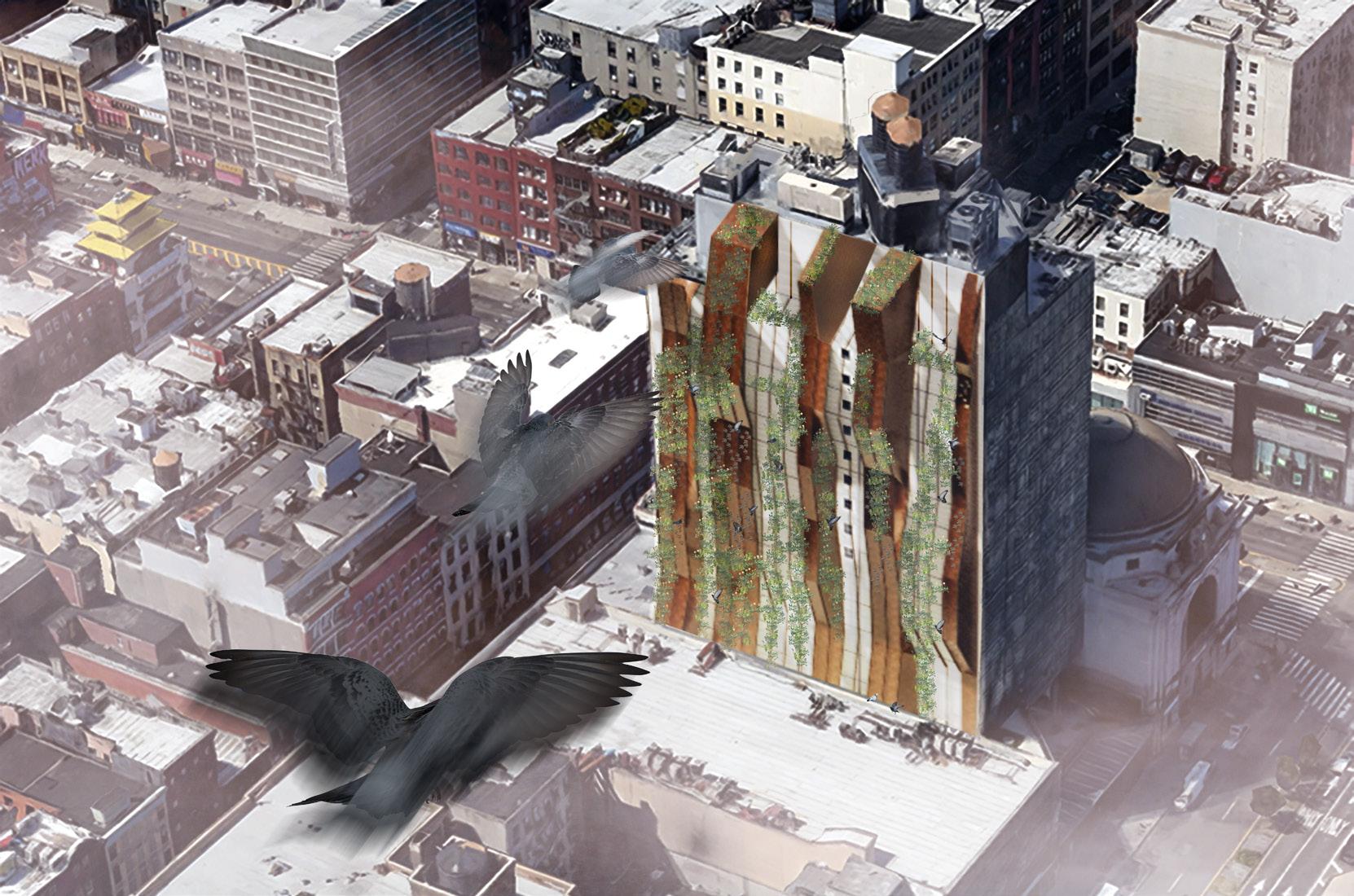
Location: Hotel 50 Bowery, 50 Bowery, New York, NY 10013
Program:
Pigeon: foraging, singing, nesting, socializing, resting, roosting
Area: 18343.9 sqft

The current situation of the southwest wall of the hotel presents a smooth expanse of concrete. Conversely, the remaining walls are gleaming facade of reflective glass. To mitigate the risk of bird collisions with the glass while also utilize the emply wall, several measures can be implemented.
Firstly, a cost-effective and swift solution involves adorning all glass surfaces with dot window film. These simple decals serve as visual cues for birds, effectively deterring collisions.
Second, incorporating crisscrossing structures onto the exterior wall, akin to those found in climbing walls, a conducive space for avian passage can be created. These intricate formations have the dual function of collecting rainwater and leaf litter, naturally forming sanctuaries for birds to perch, bathe, and forage.
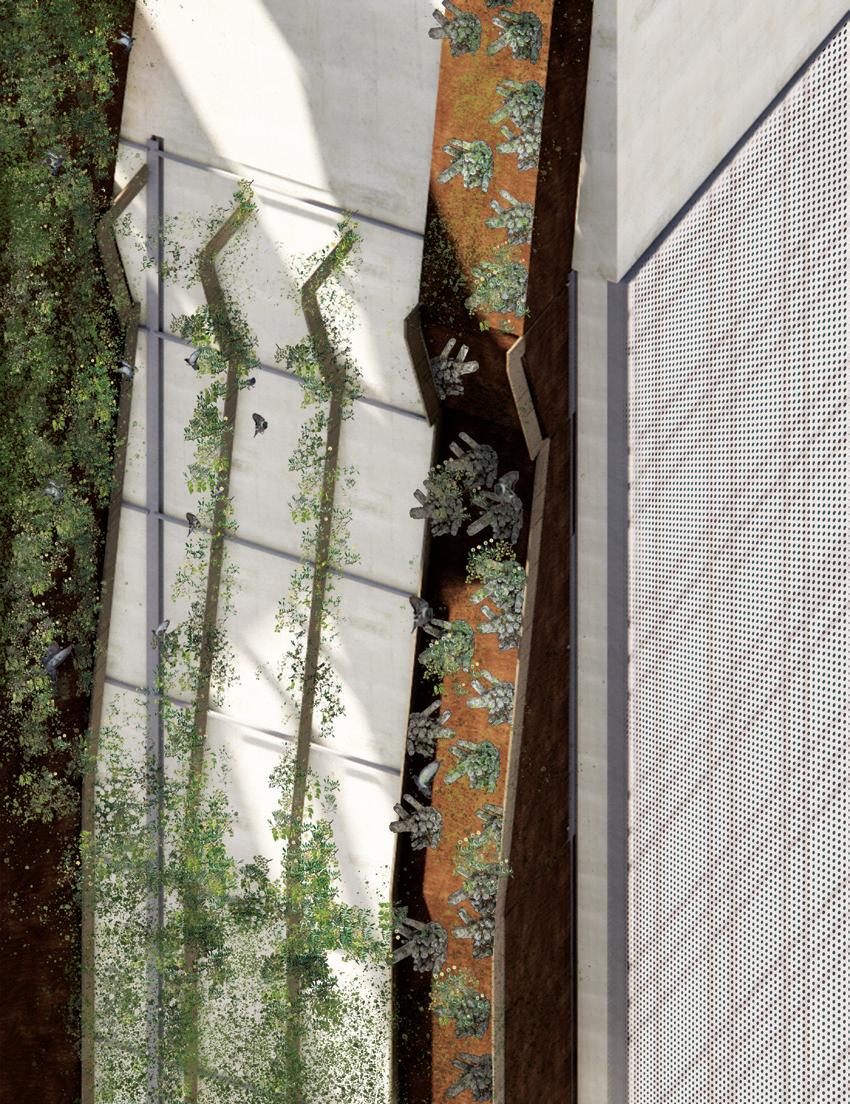
Highlighted Elements are Bird Hazard Installations.
“Bird Hazard Installation: Monolithic glazing installations that provide a clear line of sight on the exterior of buildings, including, but not limited to glass awnings, glass handrails and guards, glass wind break panels or glass acoustic barriers.”
“Fly-Through Conditions: One or more panels of glass that provide a clear line of sight through such elements creating the illusion of a void leading to the other side, including parallel glass elements, at a distance of 17 feet or less, or a convergence of glass sides creating a perpendicular, acute or obtuse corner.”
Collisions with glass windows, walls, and other structures kill up to a billion birds a year in the United States alone — making it one of the greatest human-caused threats to birds.
Understanding where birds are likely to frequent or avoid in the presence of humans helps in fostering harmonious coexistence between humans and birds. By creating habitats that accommodate both human activities and bird needs, conflicts can be minimized, and appreciation for urban wildlife can be fostered.
The diagram inform urban planning decisions by highlighting areas where bird habitats can be effectively integrated into the built environment . This ensures that urban development takes into account the needs of avian populations and promotes biodiversity conservation in cities.
Imagine the transformative impact of implementing these initiatives citywide. Picture a city where designated living areas offer pigeons sanctuary from the perils of urban life, shielding them from the chaos of traffic and ensuring their safety and well-being. In this urban landscape, pigeons continue to soar freely across the skyline, but as night falls and the city lights dim, they navigate effortlessly back to their homes, guided by the comforting familiarity of their habitats. It’s a vision of harmony between nature and the bustling metropolis, where every creature, no matter how small, finds its place in the tapestry of urban life.

Before - Nomadic, scattered
After - Settled, aggregated

(1) Ecological Space Allocation:
Different species live in different environments, reducing direct competition. Some are found in human-made spaces like buildings and streets, while others prefer natural settings such as parks and trees.
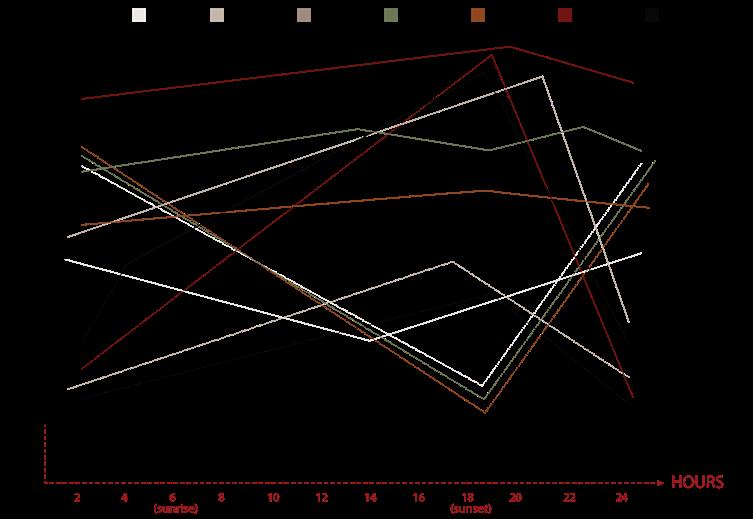

(2) Habitation Pattern:
Some species show distinct habitat preferences, visiting New York City periodically, while others reside in the city throughout the year.
(3) Nocturnal Activity:
Certain species, such as raccoons and bats, are nocturnal and have adapted their routines to minimize interactions with humans.

PURPOSE:
By creating a simulative nature environment, the goal is to reconnect city animals to their original habitats.


QUESTIONS:
Where do animals live after people have taken their place?
(urban wildlife typically live on the roofs, gaps between buildings, parks, underpass...)
Restore:
Site should be their ‘adapted city home’, and restore means making the environment more suitable for their living.
















b ECAUSE THE zOO WOODLANDS AND b RONX RIVER FORM A HEALTHY ECOSYSTEM .

Bronx Zoo, 1899, Bronx, NY.
Location: 2300 Southern Blvd, The Bronx, NY 10460, USA
Size: 265 zcres, over 6000 species.
Operated by the Wildlife Conservation Society (WCS), a nonprofit organization dedicated to wildlife conservation and education.
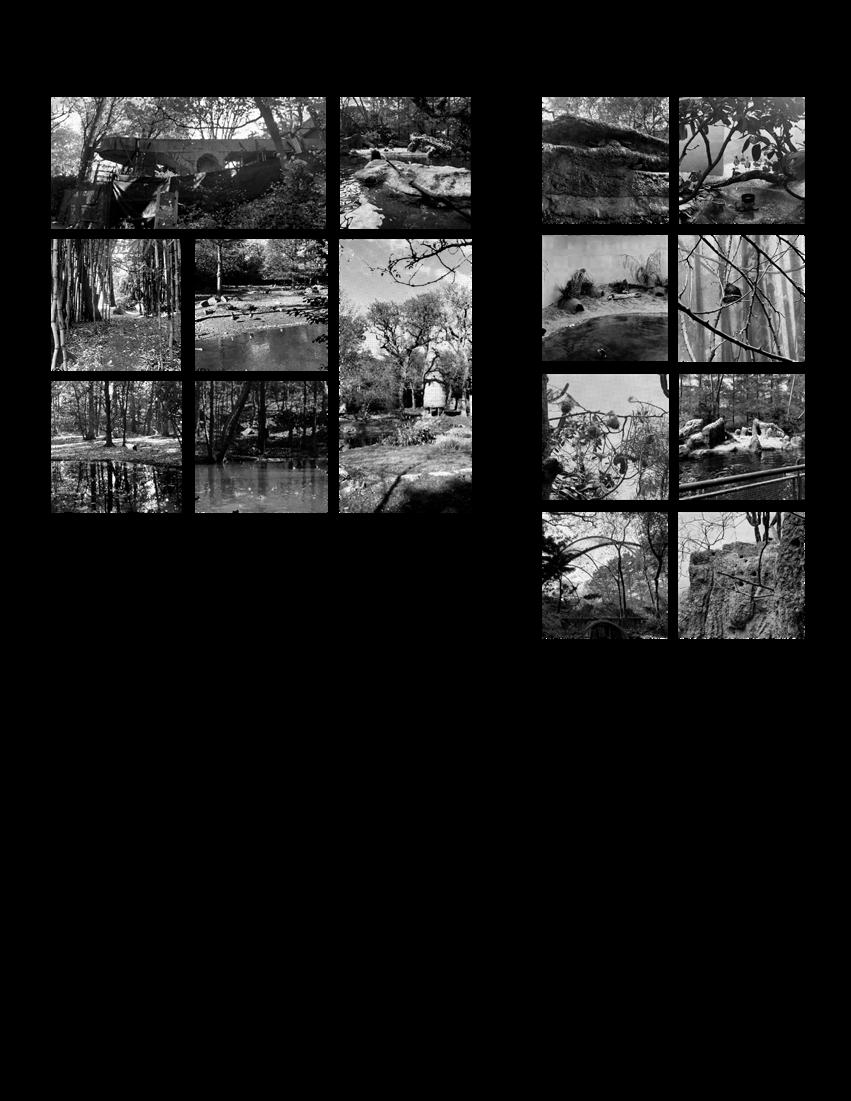
Birds build nests to help protect their eggs and nesting from weather and predators. Depending on where aquatic birds live, the nest may be...
study

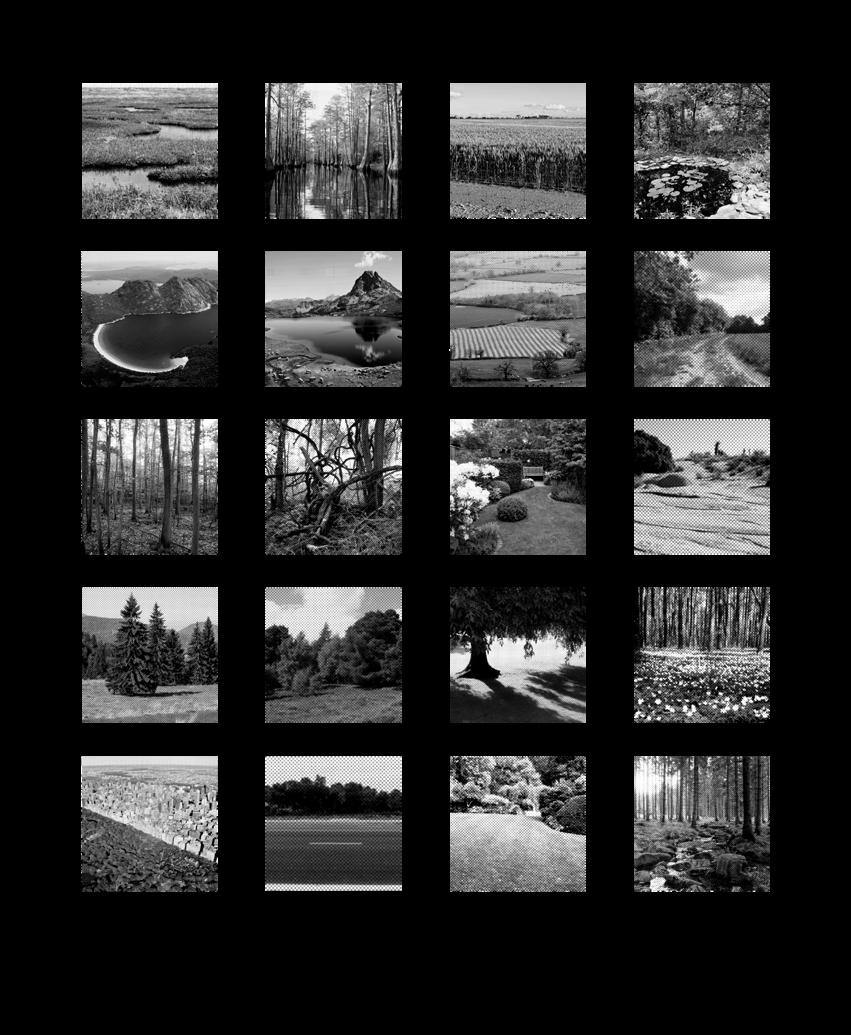
if my eggs roll of the ledge where I nest?



A network of interconnected hexagonal mesh aluminum tubes create transparency and interaction between birds and people, which enhance visitors’ experience by creating a sense of immersion. The Aviary was designed to be a flexible and adaptable space. Its modular structure allowed for easy expansion or modification to accommodate changes in the bird population or the zoo’s conservation efforts. This design strategy prioritizes long-term functionality and sustainability.
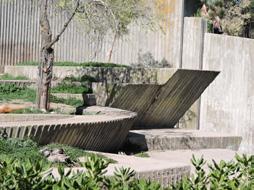
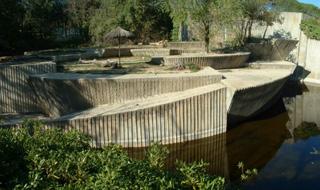
This design aims to mimic the animals’ natural habitats as closely as possible, providing them with a enriched and stimulating environment. Also, the layout of the zoo encourages visitor engagement and education. The Madrid Zoo has a strong emphasis on conservation and research. It participates in breeding programs for endangered species and conducts scientific research to contribute to global conservation efforts.


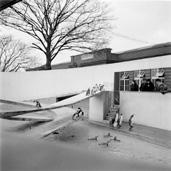

The Penguin Pool was designed with the penguin’s needs of swimming and diving. This focus on animal welfare and the creation of a naturalistic habitat is what I’m expecting in my project. While it was relatively small and lacked the natural elements penguins require. It has been empty for 15 years because penguins contracted bumblefoot infection from walking on the concrete.
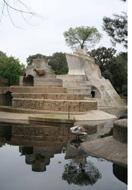





I was most inspired by the open wood facade system they designed for the upper half of the building. The strategy allow ventilation and sunlight in the space. The other feature that interesting is there is no door in the building but with six shutters, and they will open manually in the morning which mimic the nature world in architecture.




PURPOSE:
Offer a secure habitat for animals to reside and access nourishment eating socializing sleeping breeding hunting
QUESTIONS:
Is it the responsibility of humans to provide sustenance for wildlife residing within human-constructed habitats?
(How?) (Actions)
Protection form Predators: seperate location of home for different animals.
Access to Food and Water: provide a consistent and reliable source of food. (feeding stations)
Minimize Human Disturbance: to minimize stress on the animals.
YES: humans have a moral obligation to help provide sustenance for wildlife that has been displaced from their natural homes.
NO: Humans may not fully understand the consequences of altering natural processes through interventions like providing food.



PURPOSE:
Raise human awarness to protect wildlife and environment eating playing resting learning socializing
QUESTIONS:
What is the most efficient way for human to remember and learn?
How to create a memoriable experience to human?
Create immersive experiences
SENSES (Actions)
Sight (Vision)--movie
Hearing (Audition)--asmr, white noise
Smell (Olfaction)--grass, food...
Taste (Gustation)--water, food... Touch (Somatosensation) (How?)
Glazing Treatments (i.e. full surface treatment to render glazing visible, % of reflection performance);
Visual Markers (i.e. ceramic frit, printed film or digital prints);
Building Integrated Structures (i.e. screens, shades, grills, louvers, shades, mesh);
UV-Reflective Configurations with bird-friendly patterns - or add UV patterns to the visual marker list;
Low-Emissivity (Low-E) coatings in varying color ranges







1. Seth B Magle, et al. “Why Do Animals Live in Cities?” Frontiers for Young Minds, 8 Mar. 2021, https://kids.frontiersin.org/articles/10.3389/frym.2021.566272.
2. Why Do Animals Live in Cities?
3. Graeme Brooker, et al. “New Occupancy.” The Handbook of Interior Architecture and Design, Bloomsbury Visual Arts, London, 2018, pp. 139–150.
4. “Birding Guide.” Central Park Conservancy, www.centralparknyc.org/activities/guides/birding. Accessed 12 Dec. 2023.
5. Catherine Ingraham. “Animals 2: The Problem of Distinction.” Assemblage, no. 14, 1991, pp. 25–29. JSTOR, https://doi.org/10.2307/3171097. Accessed 13 Dec. 2023.
6. Charles H Rogers. “Winter Birds of Central Park, New York City.” The Wilson Bulletin, vol. 15, no. 3, 1903, pp. 91–93. JSTOR, http://www.jstor.org/stable/4153880. Accessed 13 Dec. 2023.
7. Harris, Steve. “Feral Pigeon: Flying Rat or Urban Hero?” Discover Wildlife, BBC Wildlife Magazine, www.discoverwildlife.com/animal-facts/birds/feral-pigeon-flying-rat-or-urban-hero. Accessed 25 Apr. 2024.
8. Wall, Alex. “Programming the Urban Surface - Alex Wall.” Scribd, Scribd, www.scribd.com/document/56442493/Programming-the-Urban-Surface-Alex-Wall. Accessed 28 Apr. 2024.
9. Farfán, M.Á., Díaz-Ruiz, F., Duarte, J. et al. Feral pigeon (Columba livia var. domestica) management in low-density urban areas: prevention is better than cure. Urban Ecosyst 22, 1027–1035 (2019). https://doi.org/10.1007/s11252-019-00879-1
10. American Bird Conservancy. (2023, November 28). Threat Factor Table & Supporting Materials for NYC’s Local Law 15 - American Bird Conservancy. https://abcbirds.org/glass-collisions/nyc-threatfactor
11. Wittek, N., Oeksuez, F., Güntürkün, O., & Anselme, P. (2022). More opportunities to peck for identical food availability increases foraging efficiency in pigeons. Behaviour, 159(13–14), 1201–1224. https://doi.org/10.1163/1568539x-bja10173
12. Mourning dove Hunting in New York. (n.d.). New York Dove Hunting. https://nydovehunting.weebly.com/mourning-dove-hunting-in-new-york.html
13. Carlen, E. J., Li, R., & Winchell, K. M. (2021). Urbanization predicts flight initiation distance in feral pigeons (Columba livia) across New York City. Animal Behaviour, 178, 229–245. https://doi. org/10.1016/j.anbehav.2021.06.021
14. NYC’s most iconic residents: pigeons : NYC Parks. (n.d.). https://www.nycgovparks.org/learn/wildlife-in-new-york-city/pigeons
15. Bird-Friendly Building Design | NYC Audubon. (n.d.). nycaudubon.com. https://www.nycaudubon.org/our-work/conservation/project-safe-flight/bird-friendly-building-design